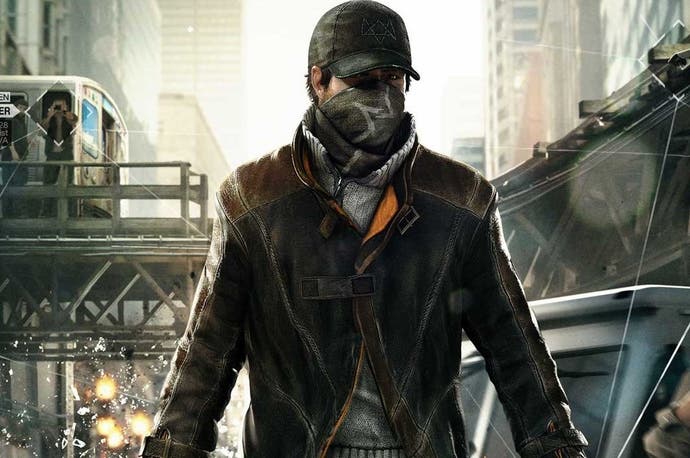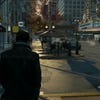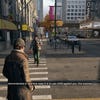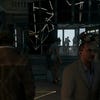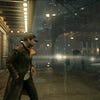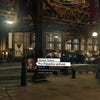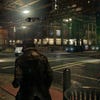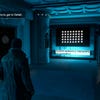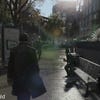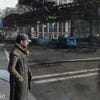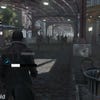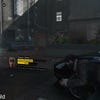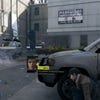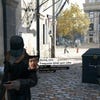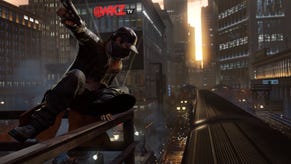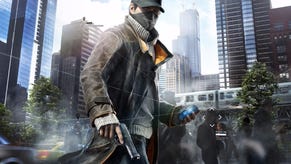Was there really a Watch Dogs graphics downgrade?
Now the dust has settled, Digital Foundry examines all the evidence.
It was our first taste of next-gen. Watch Dogs' brilliant E3 2012 reveal demonstrated a new level of open-world gameplay - a stunning simulation of Chicago, where the ability to hack smartphones and infrastructure hinted at previously impossible levels of interactivity, rendered with visual fidelity that wasn't achievable on the hardware of the time. This was Ubisoft's vision for the future of gaming.
We've already taken a shot at holding the final game up to that E3 demo and our initial take was positive. That limited but beautiful slice of gameplay did transform into a massive open-world sandbox where there is always something new to do. Graphically, Watch Dogs' stunning depiction of Chicago sheltering from heavy rainstorms also made it to the final game, but it was also clear why Ubisoft chose this weather scenario for the initial reveal, because it's by far the most spectacular way to present the game, and in daylight Watch Dogs is rather plain in comparison.
Overall, blemishes aside, we thought Ubisoft had done a good job of bringing that original promise of next-gen into final software. But we didn't address the big, specific question people had been asking, which would involve mining the specifics of the rendering technology, playing around with the game engine and scrutinising everything over time: was there a significant graphical downgrade between E3 2012 and the end of May 2014?
Figuring this out has been complicated, not least because the process of recreating the demo involved getting a solid grip on Watch Dogs' time of day and changeable weather conditions, which was less about capturing footage and more about herding cats. Capture the all-important end-mission shoot-out in less rain-soaked conditions and the showpiece visual effect is gone. Play through the same sequence when it's raining but not with a full storm in effect and it looks different again.
Other changes have been made that also conspire to make like-for-like shots difficult or impossible in the final game. Trees bend in the wind in the reveal - an effect we could approximate but not fully replicate - but this may well be down to the randomised weather rather than a downgrade, because wind-sensitive vegetation and trees clearly are present. And we found it impossible to match the shadows cast by the trees in the first shot of the E3 reveal, not because of a downgrade but because in an entire 24-hour cycle the sun never appears to be in the right position to cast the same shadows. Perhaps Ubisoft played around with light sources in the demo to get the best effect, in effect moving the sun. Is that a downgrade?
"The final game realises the promise of the Watch Dogs concept, but it's clear that rendering elements from the initial reveal didn't make it into the final game."
Above you'll see our best attempts to replicate the E3 2012 reveal in the final game with the PC version on ultra settings. It's the result of many different capture sessions - not a single playthrough, but a combination of several. And with this asset in hand, even factoring out the variations in weather conditions, the position of the sun and the fact that entire pieces of scenery have been completely replaced - in short giving Ubisoft the benefit of the doubt to every extent we can - it's clear that some visual effects have been redeployed, others noticeably pared back, while others only seem to appear in cut-scenes.
Perhaps most noticeable of all in gameplay terms is the way the final scene in the E3 demo plays out. Watch Dogs' gunplay as originally envisaged was an effects-heavy fusion of bokeh depth of field and Matrix-style bullet-time, but the slow-motion effect is completely gone (Correction: Bullet-time is a focus mode upgrade, but it looks quite unlike the E3 2012 version with no bokeh depth of field) while the depth of field effect is not as pronounced in general gameplay. We have been able to get a pretty decent facsimile of the car crash hack, but the gas station explosion isn't anywhere near as dramatic.
Lighting also takes a hit. Fewer light sources appear to cast shadows, water interaction with the scenery seems more limited and the rain is no longer lit by car headlamps in-game (though it is in cut-scenes). Mist and volumetric fog are key components of the E3 reveal's visual make-up, but they appear to be substantially pared back in the final game - and it's telling that the theatre interior, which used similar tech extensively, sees the effect almost completely removed, with just a small vent billowing smoke into the room in a couple of areas as opposed to blanket coverage before.
Comparisons inside the theatre show that Ubisoft Montreal redesigned the area extensively, producing a brighter, arguably more attractive look. A lot of remodelling also took place on the city streets outside, for reasons unknown. The most noticeable example we have of a direct like-for-like modelling downgrade comes from the individual lightbulbs on the theatre entrance. These are replaced in favour of a flat texture, reducing the lighting and geometry requirements. The argument for a downgrade gathers pace then, but the key aesthetics - and crucially the gameplay - are mostly a match. Areas that are significantly retooled can be compared, but it's difficult to draw firm conclusions because the differences are so pronounced and may well have been for artistic reasons rather than technological concerns.
"Based on the E3 2012 demo, bandwidth-heavy effects appear to have been the one of the first casualties in adapting Watch Dogs to run on the new wave of consoles."
But our quest to discover whether the game did go through fundamental change didn't stop at E3 2012 - we also returned to the game's showing at the PlayStation 4 reveal event last February, and this was actually far more illuminating. While the final version of Watch Dogs captures the spirit of the E3 2012 reveal - if not all the visual effects - this second look at the 'original' game appears to suggest more strongly that Ubisoft Montreal did re-appraise the overall look of it.
The footage we see here is important in that it demonstrates Watch Dogs in a daylight environment - the area where the final shipping game looks less than its best. Generally speaking, the lighting model appears more accomplished than anything in the same areas in the final game, with ambient light in particular looking more natural. Once again, there's heavier use of bokeh depth of field and much more lavish utilisation of alpha - vapour, mist, fog and general atmospherics. Cobblestones appear raised, perhaps suggesting parallax occlusion mapping, where the final game uses a flatter normal mapping solution. Lights are also removed, although having some of them on in the first place during the day was slightly incongruous anyway.
It's difficult to conclude whether NPC frequency was that much better in the E3 2012 demo compared to the final game, but the PS4 reveal footage definitely makes the case for a busier Chicago. We also get a better sense of the remodelling on the cityscape. While buildings looked different but not necessarily downgraded in the E3 2012 comparison, the difference in the daylight footage is more pronounced. With access to broader, wider views, the overall impression is that Chicago was significantly retooled, losing some detail in the process.
By this point, the case for a graphical downgrade is pretty much beyond question: it did happen in some form or other. So why did Ubisoft have to adjust the existing, rather splendid assets? Adjusting lighting and alpha effects is one thing, but a significant remodelling of the city suggests Ubisoft carried out a large amount of work in a timescale that appears to coincide with the approximate arrival of actual next-gen console development hardware.
"Watch Dogs as it appeared at the PS4 reveal is an even more illuminating comparison point than the game's stunning E3 2012 debut."
The most obvious conclusion is that Ubisoft - and it is not the only company to do this by any stretch - simply overestimated the raw power it would get from the new consoles. The biggest differences that stand out come from the use of depth of field, volumetric mist, fog and atmospherics - lavish to the extreme in the older version, less so in the final game. It suggests the developers were expecting significantly more graphics bandwidth than actually materialised.
Ambient lighting during daytime is another substantial difference, arguably the biggest of all. Could it be that the global illumination system Ubisoft worked on simply wasn't a good fit for the new consoles? After all, 2012 was the year of Unreal Engine 4's SVOGI real-time global illumination debut - a lighting technique ditched a year later when the engine made its PS4 debut, never to return. Quite why city geometry changed so much is also a mystery. Perhaps Ubisoft had to design around the last-gen versions?
Overall, the impression we get is that Ubisoft Montreal dived into Watch Dogs and threw everything it had at the game, course-correcting on features once target hardware was in-hand. On a rendering level, the final game may not match the feature-set of the original debut, but it's still a solid, highly presentable title, and Watch Dogs' overall performance level suggests the final game is well balanced to what the team could achieve with the new wave of consoles.
The key question, though, which is a corollary to ones about a graphical downgrade but is often left unspoken, is whether a graphical downgrade was part of a deception - whether Ubisoft put out better-looking demos at E3 2012 and the PS4 reveal because it knew that it would fuel more pre-orders. And for us, the answer to that one is probably no. Watch Dogs doesn't look as good in the shipping game as it did in original presentations, but for us the evidence points more to the standard challenges and adjustments of next-gen launch game development, where you do your best to make a game without launch hardware for as long as possible and then have to adapt quickly once it actually turns up.
Still, the good news we can end on is that this was just a game released for the launch period. So, that remarkable vision of a thriving, bustling metropolis that represents a clear generational leap beyond the Grand Theft Auto 4 and 5 standard? It wasn't quite there in Watch Dogs, but if the advances in development prowess we always see throughout console generations come to bear in this one, as they should, then it won't be long before we are talking about the real deal. In Watch Dogs 2, perhaps?
